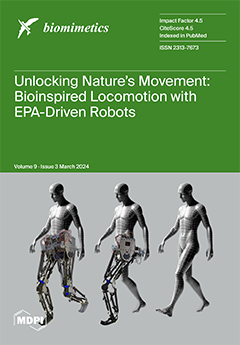The Artificial Electric Field Algorithm (AEFA) stands out as a physics-inspired metaheuristic, drawing inspiration from Coulomb’s law and electrostatic force; however, while AEFA has demonstrated efficacy, it can face challenges such as convergence issues and suboptimal solutions, especially in high-dimensional problems. To overcome
[...] Read more.
The Artificial Electric Field Algorithm (AEFA) stands out as a physics-inspired metaheuristic, drawing inspiration from Coulomb’s law and electrostatic force; however, while AEFA has demonstrated efficacy, it can face challenges such as convergence issues and suboptimal solutions, especially in high-dimensional problems. To overcome these challenges, this paper introduces a modified version of AEFA, named mAEFA, which leverages the capabilities of Lévy flights, simulated annealing, and the Adaptive
s-best Mutation and Natural Survivor Method (NSM) mechanisms. While Lévy flights enhance exploration potential and simulated annealing improves search exploitation, the Adaptive
s-best Mutation and Natural Survivor Method (NSM) mechanisms are employed to add more diversity. The integration of these mechanisms in AEFA aims to expand its search space, enhance exploration potential, avoid local optima, and achieve improved performance, robustness, and a more equitable equilibrium between local intensification and global diversification. In this study, a comprehensive assessment of mAEFA is carried out, employing a combination of quantitative and qualitative measures, on a diverse range of 29 intricate CEC’17 constraint benchmarks that exhibit different characteristics. The practical compatibility of the proposed mAEFA is evaluated on five engineering benchmark problems derived from the civil, mechanical, and industrial engineering domains. Results from the mAEFA algorithm are compared with those from seven recently introduced metaheuristic algorithms using widely adopted statistical metrics. The mAEFA algorithm outperforms the LCA algorithm in all 29 CEC’17 test functions with 100% superiority and shows better results than SAO, GOA, CHIO, PSO, GSA, and AEFA in 96.6%, 96.6%, 93.1%, 86.2%, 82.8%, and 58.6% of test cases, respectively. In three out of five engineering design problems, mAEFA outperforms all the compared algorithms, securing second place in the remaining two problems. Results across all optimization problems highlight the effectiveness and robustness of mAEFA compared to baseline metaheuristics. The suggested enhancements in AEFA have proven effective, establishing competitiveness in diverse optimization problems.
Full article






